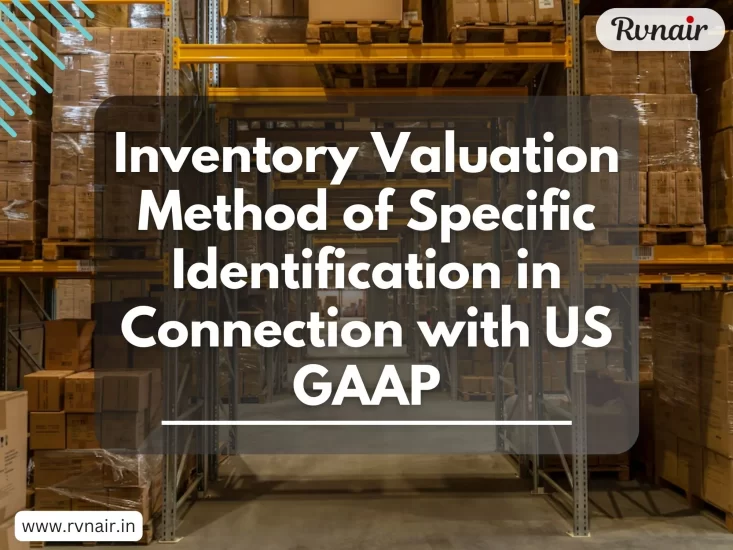
The Specific Identification method is an inventory valuation technique that assigns the actual cost of each specific item to inventory and cost of goods sold (COGS). This method provides precise matching of costs to revenues, making it particularly useful for businesses dealing in unique or high-value items. Recognized under US Generally Accepted Accounting Principles (GAAP), the Specific Identification method offers distinct advantages and poses unique challenges in inventory management and financial reporting. This article explores the principles, application, benefits, and implications of the Specific Identification method under US GAAP.
Key Concepts of Specific Identification
Definition of Specific Identification:
- Concept: The Specific Identification method involves tracking each individual inventory item and assigning its actual cost to COGS or ending inventory when it is sold or remains on hand.
- Objective: To provide an exact cost assignment for items, ensuring precise matching of costs and revenues.
Purpose of Specific Identification:
- Precise Cost Matching: Allows for accurate cost matching to revenues, which is essential for businesses dealing in non-homogeneous or high-value items.
- Detailed Tracking: Facilitates detailed tracking of inventory, making it suitable for items that are unique, identifiable, or subject to significant price variations.
Application of Specific Identification Under US GAAP
Tracking Inventory Costs:
- Item-Level Tracking: Each inventory item is tracked individually from acquisition to sale, and its specific cost is recorded.
- Sales and COGS: When an item is sold, its specific cost is transferred from inventory to COGS.
Example Calculation:
- Purchases:
- January 1: 1 unique item @ $1,000
- February 1: 1 unique item @ $1,200
- March 1: 1 unique item @ $1,500
- Sales: If the item purchased on February 1 is sold on April 1, the COGS will be $1,200.
- Ending Inventory: The remaining items in inventory will be valued at their respective costs: $1,000 and $1,500.
- Purchases:
Impact on Financial Statements:
- Balance Sheet: Inventory is reported at the specific cost of each item, providing a detailed and accurate representation of inventory value.
- Income Statement: COGS reflects the actual cost of the specific items sold, resulting in precise matching of costs and revenues.
Advantages of Using Specific Identification
Accurate Cost Matching:
- Revenue Matching: The method ensures accurate matching of specific costs to specific revenues, providing a clear picture of profit margins for each item.
Detailed Inventory Management:
- Precision: Facilitates detailed tracking and management of individual inventory items, which is beneficial for businesses with diverse or high-value products.
Reflects True Cost Flow:
- Actual Costs: The method reflects the true cost flow of inventory, as it records the specific cost of each item sold, aligning with the actual physical flow of goods.
Compliance with US GAAP:
- Acceptability: Recognized under US GAAP, making it a compliant and transparent method for inventory valuation.
Challenges and Considerations with Specific Identification
Complex Record Keeping:
- Detailed Tracking: Requires meticulous tracking of each inventory item and its associated cost, which can be labor-intensive and complex, especially for businesses with large volumes of inventory.
Inapplicability to Homogeneous Items:
- Limited Use: Not suitable for businesses dealing with large quantities of identical items, where tracking individual costs is impractical.
Potential for Manipulation:
- Cost Assignment: There is a risk of manipulation in cost assignment, as businesses could selectively allocate higher costs to COGS to reduce taxable income.
Impact on Financial Ratios:
- Volatile Costs: Financial ratios may be affected by the specific costs assigned to COGS, leading to variability in profit margins and other metrics.
Disclosure Requirements Under US GAAP
Inventory Valuation Method:
- Disclosure: Companies must disclose the inventory valuation method used, including Specific Identification, in their financial statements.
Impact on Financial Position:
- Financial Notes: Disclosures should include information on how the use of the Specific Identification method affects the financial position and results of operations.
Inventory Details:
- Breakdown: Detailed information regarding the composition and valuation of inventory, such as the cost of individual items, should be provided.
Comparison with Other Inventory Methods
Specific Identification vs. FIFO:
- FIFO Overview: First-In, First-Out (FIFO) assumes the oldest inventory items are sold first.
- Comparison: FIFO averages costs over time for identical items, while Specific Identification tracks and records the actual cost of each item, offering precise cost matching but requiring more detailed record keeping.
Specific Identification vs. LIFO:
- LIFO Overview: Last-In, First-Out (LIFO) assumes the most recently purchased inventory items are sold first.
- Comparison: LIFO averages recent costs for tax benefits, whereas Specific Identification tracks each item’s cost, providing exact matching but lacking the tax advantages of LIFO.
Specific Identification vs. Weighted Average Cost:
- Weighted Average: This method averages the cost of all inventory items available for sale during the period.
- Comparison: Weighted Average Cost smooths out cost fluctuations by averaging, while Specific Identification provides precise cost allocation for each item, offering more detailed cost matching but requiring extensive tracking.
Industry-Specific Considerations
Luxury Goods:
- High-Value Items: The Specific Identification method is ideal for luxury goods retailers dealing with unique, high-value items such as jewelry, designer clothing, or artwork.
Automotive:
- Unique Costs: Car dealerships often use Specific Identification to track the cost of individual vehicles, which can vary significantly based on make, model, and additional features.
Technology and Electronics:
- Product Variation: Companies dealing in high-value electronics with diverse features and costs can benefit from the precise cost tracking provided by Specific Identification.
Case Study: Specific Identification in Practice
Example Company:
- Scenario: A luxury car dealership, AutoLux, uses Specific Identification for inventory accounting. The dealership sells high-value vehicles, each with unique costs.
- Application: AutoLux tracks each car’s cost from purchase to sale, recording the specific cost as COGS when the car is sold.
- Outcome: AutoLux reports precise COGS and inventory values, providing accurate profit margins for each vehicle sold.
Financial Analysis:
- Profitability Impact: AutoLux’s gross profit margins reflect the actual cost of each vehicle, providing a clear picture of profitability for each sale.
- Balance Sheet Effect: The company’s ending inventory is valued at the specific cost of unsold vehicles, ensuring detailed and accurate inventory reporting.
Regulatory and Compliance Considerations
Consistency Principle:
- Requirement: US GAAP requires that companies consistently apply their chosen inventory valuation method from one period to another. Any changes in the method must be justified and disclosed.
Lower of Cost or Market (LCM):
- Valuation Rule: Inventory must be reported at the lower of cost or market value, where the market value is generally the replacement cost limited by a ceiling of net realizable value and a floor of net realizable value less a normal profit margin.
Impairment Considerations:
- Write-Downs: If the market value of specific inventory items falls below their cost, companies must write down the inventory to reflect the lower value, impacting COGS and net income.
Conclusion
The Specific Identification method offers a highly accurate and detailed approach to inventory valuation under US GAAP, making it suitable for businesses dealing in unique, high-value, or non-homogeneous items. It provides precise cost matching and detailed inventory tracking, but also requires meticulous record keeping and can be challenging to implement for large or diverse inventories. Proper disclosure and consistent application are crucial to ensure compliance with US GAAP and provide clear, reliable financial reporting.
